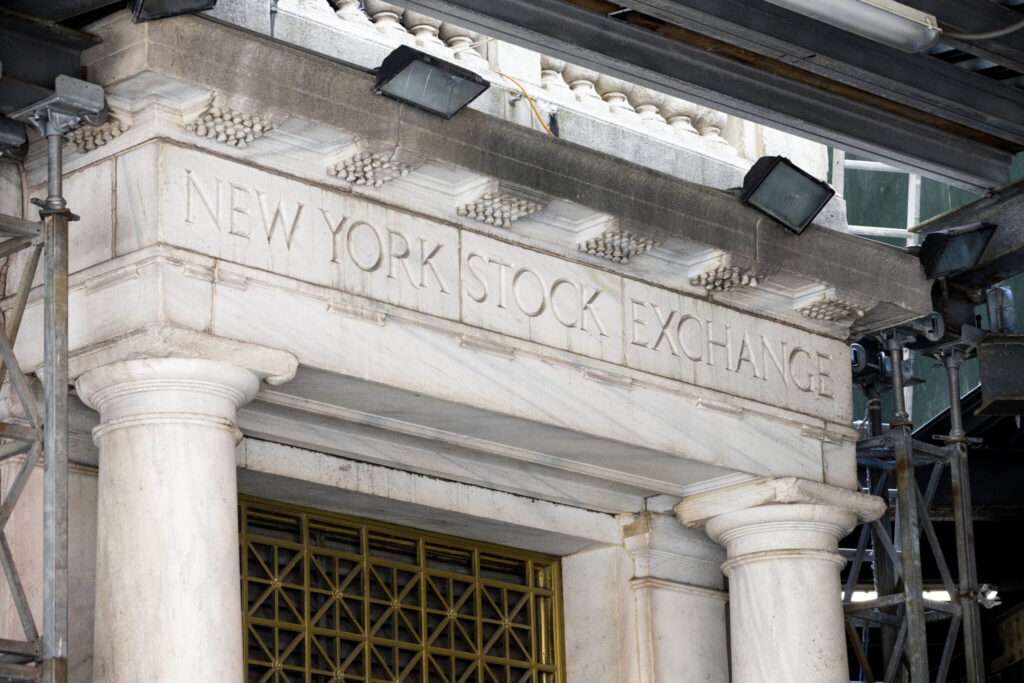Wall Street stocks retreated early Thursday after better-than-expected US employment data added to worries about Federal Reserve monetary policy. The yield on the 10-year US Treasury note, a proxy for Fed interest rates, rose following a survey from payroll firm ADP that showed a jump of 235,000 private-sector jobs in December, more than expected. The Associated Press has the story:
Wall Street stocks open lower after job market report
Newslooks- NEW YORK (AP)
Stocks are opening broadly lower on Wall Street and Treasury yields are rising after another hot reading on the job market raised worries that the Federal Reserve will need to continue inflicting pain on the economy in order to fight inflation. The S&P 500 was down 1.2% in the early going Thursday, as was the Dow Jones Industrial Average. The Nasdaq dropped 1.4%. The pullback came after payroll company ADP reported a bigger-than-expected increase in jobs at private companies last month. The continued strength in the job market makes the Fed’s job of reining in inflation more difficult by putting upward pressure on wages.
THIS IS A BREAKING NEWS UPDATE. AP’s earlier story follows below.
Markets appeared to be slow in gaining traction early Thursday ahead of more jobs data that’s expected to show continued strength in the U.S. labor market.
Futures for the Dow Jones industrials and the S&P 500 shifted between small gains and losses before the opening bell.
The U.S. government will release its weekly unemployment report on Thursday and its closely-watched December jobs report on Friday. Strong jobs numbers are seen as an indication of inflationary pressures that would support further interest rate increases by the Federal Reserve.
On Wednesday, the government reported that U.S. job openings slipped in November but remained high, suggesting businesses remain determined to add workers. There are nearly 1.8 jobs for every unemployed person, whereas before the pandemic, there were usually more unemployed people than jobs.
In an attempt to cool the economy and slow job growth, the Fed raised its key short-term interest rate last month for the seventh time in 2022 and signaled more hikes to come. The increase was smaller than those from the previous four meetings, reflecting signs that inflation, while still high, has been easing.
Minutes from its mid-December meeting released Wednesday show Fed officials remained determined to keep rates high, taking little comfort from inflation’s decline from a peak of 9.1% in June to 7.1% in November.
The Fed’s benchmark lending rate stands at a range of 4.25% to 4.5%, up from close to zero following seven increases last year. It has forecast that the rate will reach a range of 5% to 5.25% by the end of 2023 and it isn’t calling for a rate cut before 2024.
Though the U.S. labor market remains robust, layoffs have been mounting in the technology sector, which is dealing with falling demand as inflation squeezes both businesses and homes. On Wednesday, Amazon announced that it is laying off 18,000 workers, while the software company Salesforce, owner of Slack, said it was cutting around 8,000 jobs. Facebook parent Meta, Twitter, Doordash and others have announced cuts in recent months as well.
In Europe, Britain’s FTSE 100 rose 0.6%, France’s CAC 40 inched up 0.1% and Germany’s DAX was unchanged.
In Asia, worries over China’s economic slowdown were weighing on regional sentiment.
Japan’s benchmark Nikkei 225 rose 0.4% to finish at 25,820.80. Australia’s S&P/ASX 200 edged up nearly 0.1% to 7,063.60. South Korea’s Kospi added 0.4% to 2,264.65. Hong Kong’s Hang Seng jumped 1.3% to 21,052.17, while the Shanghai Composite gained 1.0% to 3,155.22.
India’s Sensex declined 1%.
Widespread COVID-19 cases in China have added to gloom over a long-term slump in its property sector and over the impact of pandemic restrictions that were only recently loosened as the virus gained ground in the worst nationwide outbreak so far.
“Retail sales in general should be weaker in December compared to the prior month,” said Robert Carnell, regional head of research Asia-Pacific at ING. He said demand might bounce back during the Lunar New Year later in the month.
“After the long holiday, there could be even more daily COVID cases, and then another quiet month for retail. The road to recovery may not be smooth for retailers,” he said.
Investors have had their eyes on the Japanese yen, because investors don’t expect Japan’s super-low rates to continue, even as rates are rising in other nations.
“Even though the BoJ warned that this doesn’t mean that a rate hike is imminent, the BoJ won’t be able to maintain rates below zero while rates are soaring elsewhere. Sooner or later, the BoJ will hike, and that’s enough for traders to pile into the yen, which has been the worst performing major currency last year,” said Ipek Ozkardeskaya, senior analyst at Swissquote Bank.
In currency trading, the U.S. dollar rose slightly to 132.69 Japanese yen from 132.56 yen. The euro cost $1.0608.
In energy trading, benchmark U.S. crude rose $1.42 to $74.26 a barrel in electronic trading on the New York Mercantile Exchange. It dropped $4.09 on Wednesday. Brent crude, the international pricing standard, rose $1.55 to $79.39 a barrel.
On Wall Street Wednesday, the S&P 500 rose 0.8% and the Dow Jones Industrial Average advanced 0.4%. The Nasdaq composite added 0.7% while the Russell 2000 index gained 1.2%.







